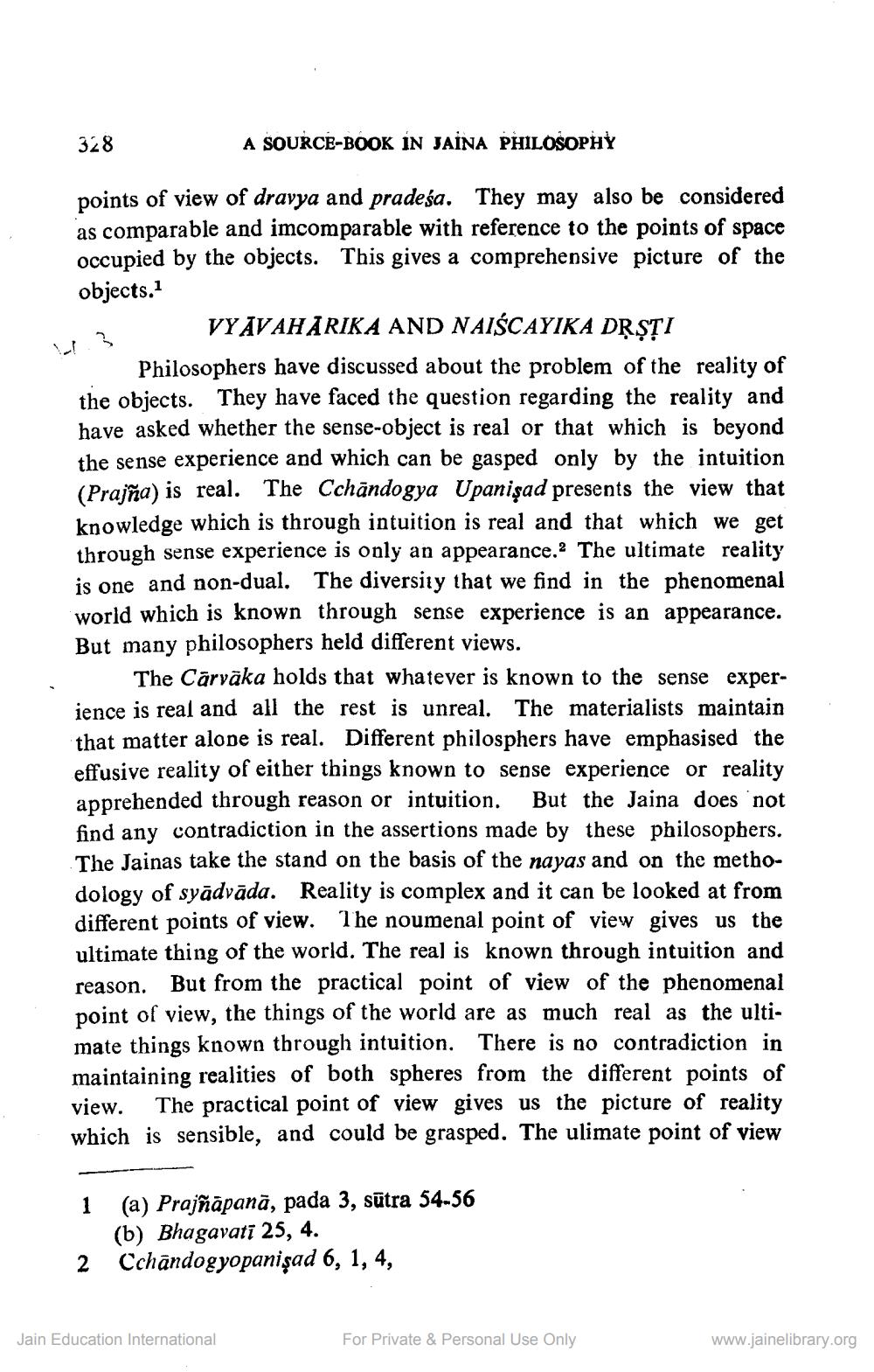________________
328
A SOURCE-BOOK IN JAINA PHILOSOPHY
points of view of dravya and pradeśa. They may also be considered as comparable and incomparable with reference to the points of space occupied by the objects. This gives a comprehensive picture of the objects.1
VYAVAHARIKA AND NAIŚCAYIKA DRSTI Philosophers have discussed about the problem of the reality of the objects. They have faced the question regarding the reality and have asked whether the sense-object is real or that which is beyond the sense experience and which can be gasped only by the intuition (Prajña) is real. The Cchāndogya Upanişad presents the view that knowledge which is through intuition is real and that which we get through sense experience is only an appearance. The ultimate reality is one and non-dual. The diversity that we find in the phenomenal world which is known through sense experience is an appearance. But many philosophers held different views.
The Carvāka holds that whatever is known to the sense experience is real and all the rest is unreal. The materialists maintain that matter alone is real. Different philosphers have emphasised the effusive reality of either things known to sense experience or reality apprehended through reason or intuition. But the Jaina does not find any contradiction in the assertions made by these philosophers. The Jainas take the stand on the basis of the nayas and on the methodology of syādvāda. Reality is complex and it can be looked at from different points of view. The noumenal point of view gives us the ultimate thing of the world. The real is known through intuition and reason. But from the practical point of view of the phenomenal point of view, the things of the world are as much real as the ultimate things known through intuition. There is no contradiction in maintaining realities of both spheres from the different points of view. The practical point of view gives us the picture of reality which is sensible, and could be grasped. The ulimate point of view
1
(a) Prajñāpanā, pada 3, stra 54-56 (b) Bhagavatī 25, 4. Cchandog yopanişad 6, 1, 4,
2
Jain Education International
For Private & Personal Use Only
www.jainelibrary.org




